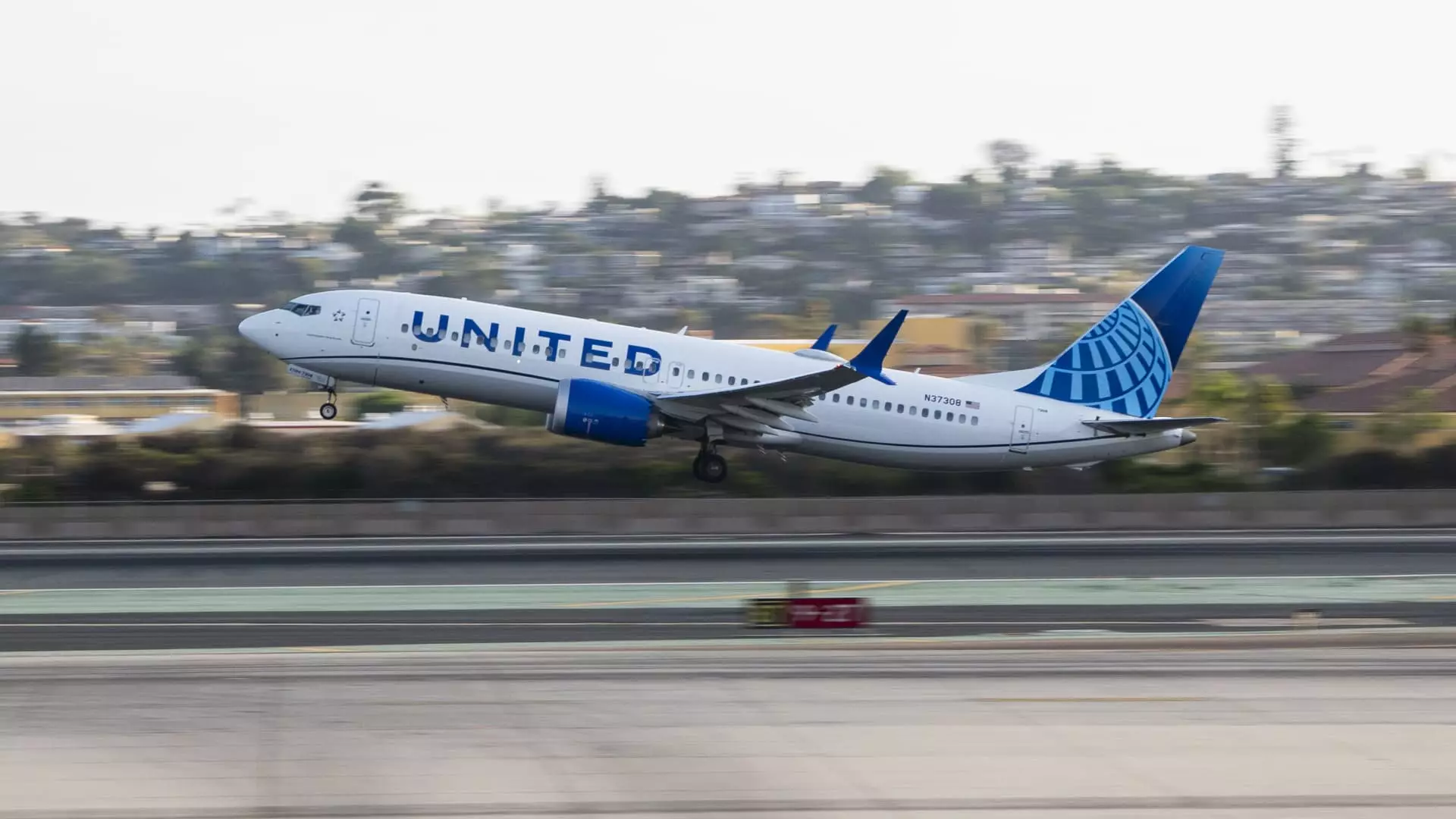United Airlines is positioning itself as a resilient player in the airline industry with the announcement of a $1.5 billion share buyback program following a surprisingly strong earnings report for the third quarter. This venture marks the airline’s first repurchase initiative since the onset of the COVID-19 pandemic, which significantly impacted the travel sector. United’s financial results highlighted a steady recovery, with the airline reporting an adjusted earnings per share of $3.33, surpassing analysts’ expectations of $3.17. Remarkably, revenue for the period reached $14.84 billion, which not only reflected a 2.5% year-over-year increase but also exceeded the anticipated $14.78 billion.
The results demonstrate United’s effective navigation through the post-pandemic landscape, showcasing its ability to enhance revenue streams despite facing challenges related to operational capacity and cost pressures. CEO Scott Kirby’s commitment to prioritizing investments in both personnel and infrastructure alongside the share repurchase program indicates a strategic approach aimed at sustainable long-term growth.
Looking ahead, United Airlines has set a bullish forecast for the fourth quarter, predicting adjusted earnings per share to fall between $2.50 and $3.00. This projected outcome alights excitement in the market, especially when compared to the adjusted figure of $2.00 per share recorded in the same quarter last year. Analysts, who anticipated earnings of around $2.68, are encouraged by the upward potential suggested by the airline’s strategies to boost revenue.
United’s decision to pursue a share buyback comes amidst a wider trend within the industry, as competitor Southwest Airlines recently announced its own $2.5 billion repurchase plan. This reflects a broader recovery narrative within U.S. airlines that collectively received substantial government support during the pandemic, totaling over $50 billion. As such, the share repurchase could signal a return to a pre-pandemic operational norm, where publicly traded companies could reinvest in their own equity.
United’s third quarter financial performance was driven by a combination of factors. The airline noted a strong increase in corporate travel revenue, which surged by 13%. This emphasizes the recuperation of business travel — a critical component of airline revenue that was severely hampered during the pandemic. Furthermore, the spike in premium revenue, which includes business class tickets, rose 5%, while booming sales of basic economy fares, which soared 20%, illustrate a diversified demand from various traveler segments.
Moreover, United’s strategic adjustments to its flight capacity, which saw an increase of 4.1% in the third quarter, coincided with a focused effort to enhance operational efficiency. By trimming back on less profitable flights that previously inundated the market — driving down fare prices — United appears to have adopted a more disciplined approach, which contributed positively to its revenue metrics.
In a bid to capitalize on the growing international travel demand, United has laid out plans for an expansive network that will include new routes to Mongolia, Senegal, Spain, and Greenland for the upcoming year. This ambitious strategy demonstrates not only the airline’s confidence in market recovery but also its readiness to diversify its service offerings to meet evolving passenger needs.
However, alongside this growth trajectory lies a set of challenges, particularly concerning labor relations and supply chain dynamics. The airline’s flight attendants’ union expressed concerns regarding the timing of the share buyback, criticizing the decision amidst ongoing labor negotiations which have yet to yield an updated labor agreement. Additionally, concerns regarding Boeing’s production issues stemming from a prolonged machinist strike may pose future hurdles in meeting operational demands.
United Airlines is effectively leveraging its robust earnings report and optimistic market forecasts to initiate a noteworthy share buyback program. By focusing on strategic revenue growth, expanding service routes, and maintaining a commitment to its workforce, United aims to fortify its position in an ever-evolving aviation landscape. However, vigilance will be paramount as the airline navigates the complexities of labor relations and supply chain uncertainties while striving for profitable operations. The forthcoming analysts’ call will undoubtedly shine a light on how United plans to mitigate these challenges while sustaining its positive momentum.

